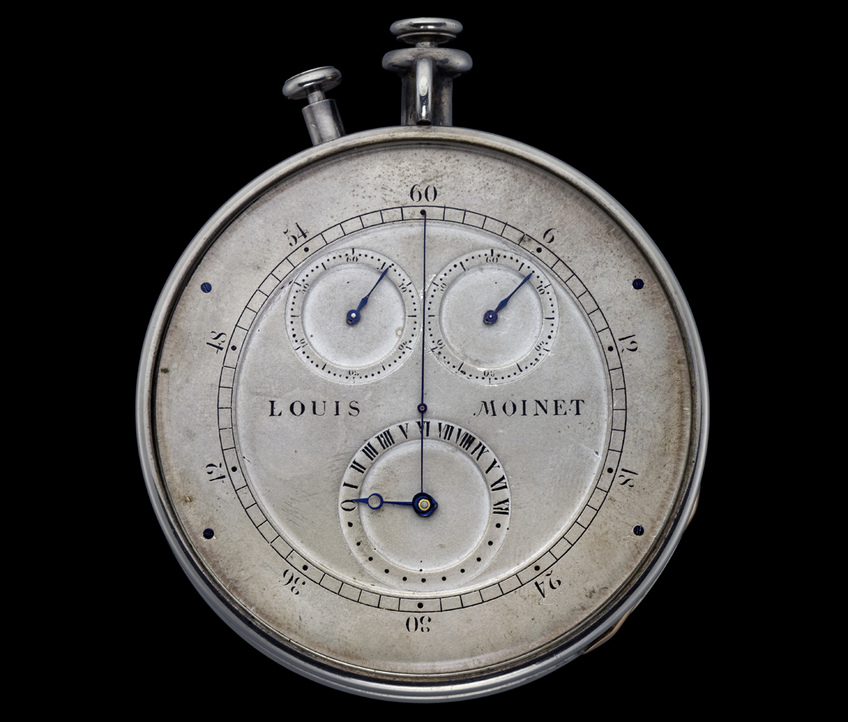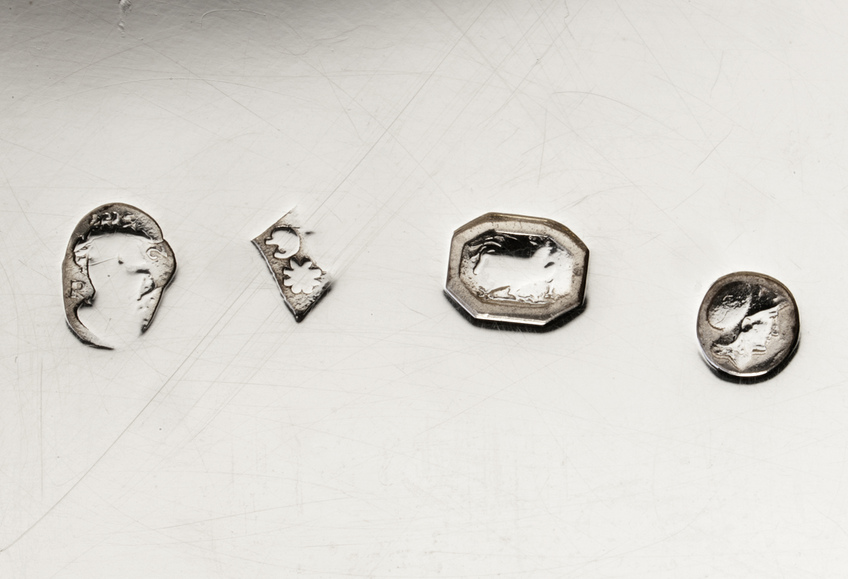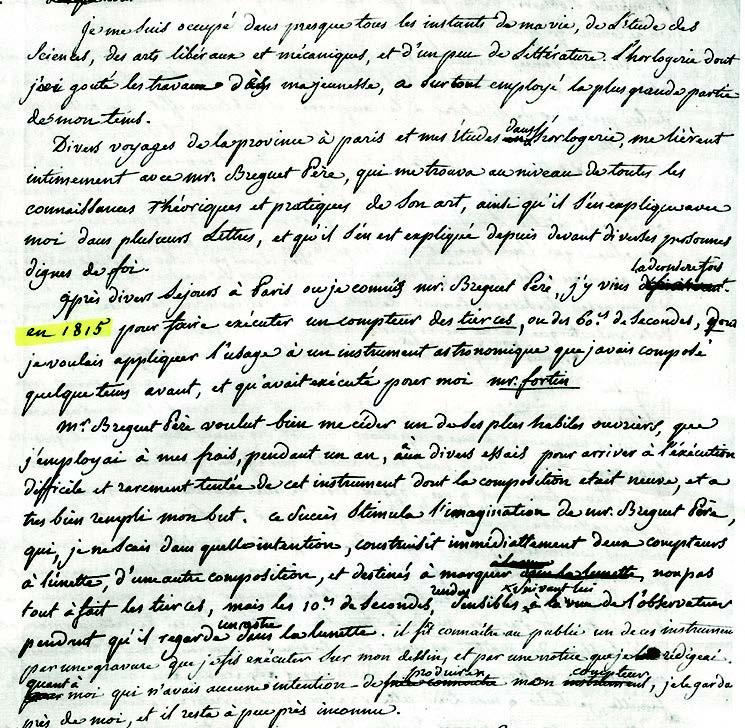

Louis Moinet, the chronograph’s inventor
Louis Moinet, the chronograph’s inventor
LOUIS MOINET, THE CHRONOGRAPH'S INVENTOR
It wasn't until 2013 that a new timekeeping instrument was rediscovered that completely overturned all of the received ideas and added a new chapter to the history of these devices. This new instrument is signed by Louis Moinet and can be seen in figure 22.
It has three subdials and one large hand, but offers no further information other than the name of the well-known but often forgotten watchmaker, Louis Moinet (Bourges 1768 - Paris 1853).
Like all chronographs (as well as many watches and the dead seconds covered previously), it has a large centrally positioned seconds hand – a classic feature of this kind of instrument. This hand points to an outer circle of 'railway'-style markers, which are divided into 60. Normally, we would assume that this outer circle indicated seconds, but in this case it is in fact broken down into units of 6...

At the bottom, there is a subdial with just one hand and two sets of markers, which was doubtless intended to indicate hours over a 24-hour period. However, this subdial does not have a minute hand...
At the top are two subdials that are divided into units of 5. Each dial has just one hand indicating a sixtieth of something... but of what?
Finally, there are 2 push-pieces next to the case pendant.
From these parts, we can surmise that the instrument is some kind of timer, as it seems to be simply (dare I say it) a device for measuring a period of time, rather than one that continuously displays hours and minutes. For more clues, we must turn to what Louis Moinet himself wrote(6) in 1848: In Volume 1 he writes: ...In England, the inventor John Arnold had already tried to make a compteur de tierces(7) with a hand that would make one complete revolution each second. However, he never succeeded in making this idea a reality... Moinet continues ...a few years ago, we had the opportunity to make an extremely precise compteur de tierces.
(6) Nouveau traité générale d’horlogerie, Louis Moinet vol. 1 and 2, 1848
(7) 'Thirds' in English. A now obsolete term used to describe one sixtieth of a second.
In terms of its construction, this information is scarce indeed, but could it be the compteur de tierces ('thirds timer') referred to by Moinet? To be certain, we need to take the movement apart and look at it in much greater detail. We are able to do this here using photographs provided by Ateliers Louis Moinet. Figure 23 (below) shows all of the instrument's component parts.
DATE OF MANUFACTURE
Two details provide sufficient information to allow us to conclude that the compteur dates from 1815/1816:
1) The hallmarks stamped on the inside of the back cover of the case (figure 65) have been analysed by experts in hallmarks from this era, who believe that they indicate these dates.

2) This appears to be confirmed by a document written by Louis Moinet himself (figure 66), the content of which indicates that the compteur was indeed made around these dates. 
There is no doubt as to the authenticity of this manuscript, which gives us some interesting information other than the date of 1815.
1) It is evident that, like all the 'great' watch-makers, Moinet was not continually at his workbench, but rather had his designs made by other watch-makers.
2) Furthermore, it confirms that his compteur was made for personal, rather than commercial, purposes.
3) Finally, it is very interesting to note Breguet's use of one tenth of a second, which seems very early...
Transcript
I have spent almost all of my life studying the sciences and liberal and applied arts, as well as a little literature. Watch-making, which I discovered as a youth, has taken up most of my time. Through various trips from the provinces to Paris and through my watch-making studies, I became close friends with the inventor, Mr Breguet, who admired my theoretical and practical knowledge of his art, as he has since made clear in several letters to me and in the company of several authoritative individuals. After various trips to Paris, where I met Mr Breguet the Elder, I went there for the final time in 1815 to have a thirds (one sixtieth of a second) timer made, which I wanted to use with an astronomical instrument that I had designed some time previously and that Mr Fortin had made for me.
Mr Breguet was keen to put one of his most skilled workers at my disposal, whom I employed at my own expense for a year. The task of manufacturing this brand new instrument was difficult and had seldom been attempted before. It took several attempts, but eventually achieved my purpose most satisfactorily. This achievement sparked the imagination of Mr Breguet who, for whatever reason, immediately made two telescope timers with a different design, which were intended to mark not exactly thirds, but rather one tenth of a second.
According to him, these timers would be visible to the observer while they were looking at a star through the telescope. He publicised one of these instruments via an engraving that I had made based on my drawing and by a notice that I wrote. As for me, I had no intention of making my compteur public. It remained in my personal possession, its existence scarcely disclosed.

